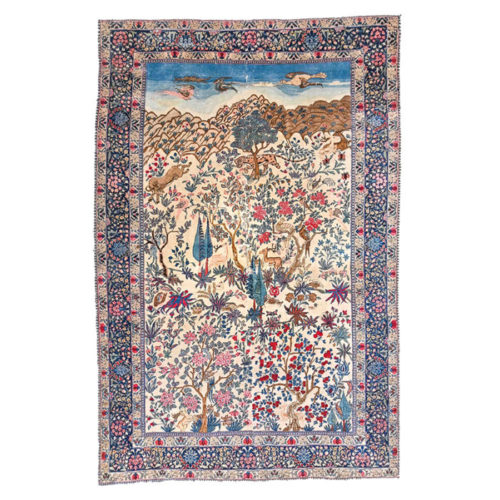-
Out of stock
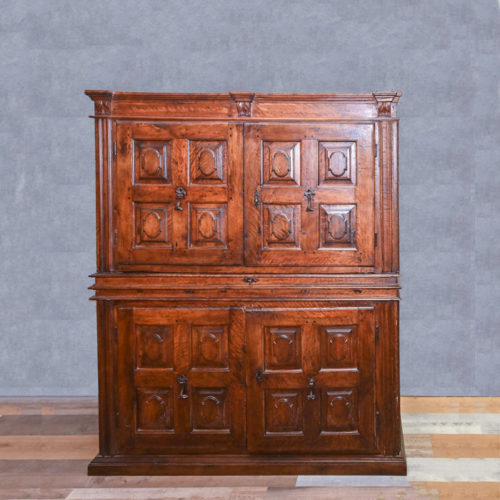 Double body in walnut, sacristy cabinet with four doors and a single central drawer, the doors are embellished with 4 ashlar panels and a wrought iron pendant in the center. The sides are also panelled. The cabinet has undergone to a small modification of the drawer and the band that rests on the ground, but overall it has been preserved as it was in its original form. Full period '600, Piedmont. Measurements: H 195 x W 160 x D 71.5 cm
Double body in walnut, sacristy cabinet with four doors and a single central drawer, the doors are embellished with 4 ashlar panels and a wrought iron pendant in the center. The sides are also panelled. The cabinet has undergone to a small modification of the drawer and the band that rests on the ground, but overall it has been preserved as it was in its original form. Full period '600, Piedmont. Measurements: H 195 x W 160 x D 71.5 cm -
Out of stock
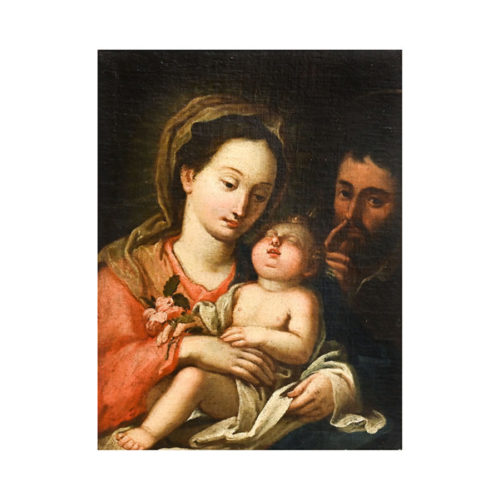 Holy Family, splendid high quality oil on canvas depicting the Madonna, Child and Saint Joseph, school painting between the 17th and 18th century. The condition is excellent, the pictorial surface does not require cleaning and has maintained its originality over time, coeval silver frame. Measurements: In frame H 70 x W 56 x P 6 / Canvas H 56 x W 41 cm
Holy Family, splendid high quality oil on canvas depicting the Madonna, Child and Saint Joseph, school painting between the 17th and 18th century. The condition is excellent, the pictorial surface does not require cleaning and has maintained its originality over time, coeval silver frame. Measurements: In frame H 70 x W 56 x P 6 / Canvas H 56 x W 41 cm -
Out of stock
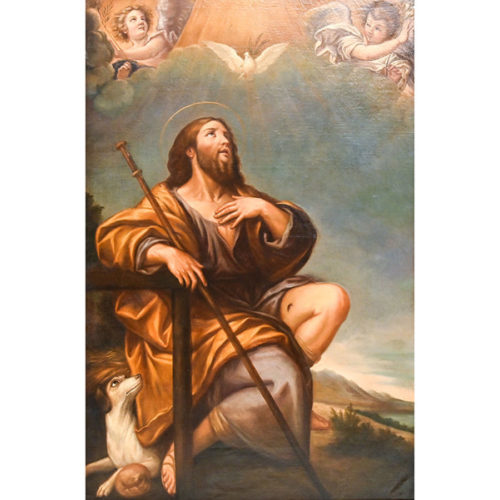 "San Rocco" oil on canvas from the 19th century. Large painting of the saint with dog, angels and the Easter dove. The painting is in excellent condition. San Rocco is invoked as protector from the plague and from great disasters, earthquakes, epidemics and very serious diseases; and it was a great example of human solidarity and Christian charity. Period: 19th century Measurements: In frame H 163 x W 112 x D 5 / Canvas H 153 x W 102 cm
"San Rocco" oil on canvas from the 19th century. Large painting of the saint with dog, angels and the Easter dove. The painting is in excellent condition. San Rocco is invoked as protector from the plague and from great disasters, earthquakes, epidemics and very serious diseases; and it was a great example of human solidarity and Christian charity. Period: 19th century Measurements: In frame H 163 x W 112 x D 5 / Canvas H 153 x W 102 cm -
Out of stock
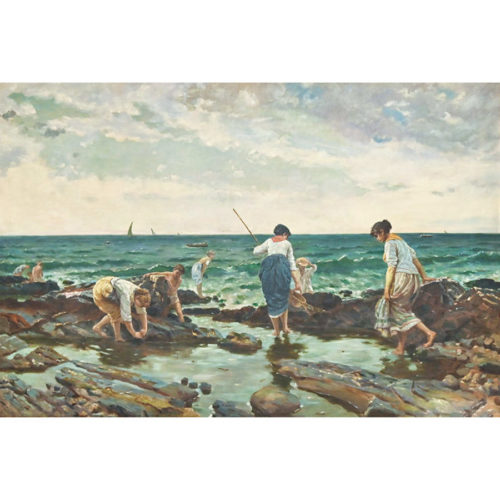 Large Louis Philippe mirror in carved wood and gilded with gold leaf, dating back to 1880, original mirror, excellent condition Period: Second half of the 19th century Measurements: H 180 x W 97 x D 5 cm
Large Louis Philippe mirror in carved wood and gilded with gold leaf, dating back to 1880, original mirror, excellent condition Period: Second half of the 19th century Measurements: H 180 x W 97 x D 5 cm -
Out of stock
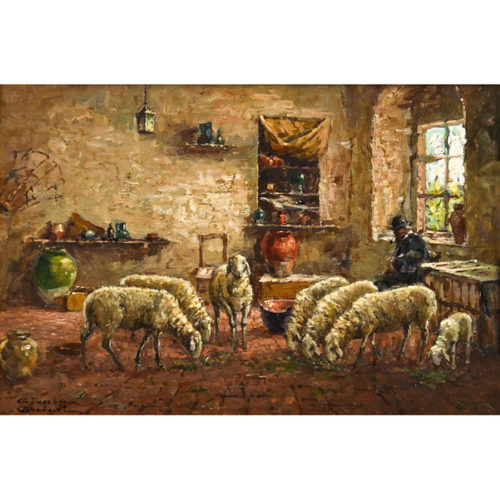 "Interior with sheperd and sheep". Oil on tablet by Giuseppe Gheduzzi (Crespellano (BO) May 1889 - Turin May 1957). Giuseppe Gheduzzi was born in Crespellano (BO) on 12 May 1889. Son of the painter Ugo, from whom he learned, like his brothers Cesare, Mario and Augusto, the first rudiments of art. He made his debut in Vignola in 1907 with the painting Alpine landscape. He refined his training in Turin at the Albertina Academy as a pupil of Andrea Marchisio and Paolo Gaidano. After leaving the Academy, he collaborates with his father for the realization of the sets for the Teatro Regio. Giuseppe is a skilled landscape painter: he paints Venetian glimpses and panoramas, views of the Piedmontese lakes and valleys and of the Ligurian Riviera. Unlike his brother Cesare, however, he also excels in interior paintings with figures and orientalist themes. Particularly appreciated by the public and critics are in fact his genre scenes and the paintings depicting interiors of workshops of artisans, antique dealers and stables. During his life Giuseppe participated in many reviews of the Promoter of Fine Arts in Turin and in the Circolo degli Artisti in Turin, and made several personal exhibitions. He died in Turin on May 21, 1957. Period: 1930s Measurements: In frame H 36 x W 28 x D 3 / Canvas H 20 x W 11,5 cm
"Interior with sheperd and sheep". Oil on tablet by Giuseppe Gheduzzi (Crespellano (BO) May 1889 - Turin May 1957). Giuseppe Gheduzzi was born in Crespellano (BO) on 12 May 1889. Son of the painter Ugo, from whom he learned, like his brothers Cesare, Mario and Augusto, the first rudiments of art. He made his debut in Vignola in 1907 with the painting Alpine landscape. He refined his training in Turin at the Albertina Academy as a pupil of Andrea Marchisio and Paolo Gaidano. After leaving the Academy, he collaborates with his father for the realization of the sets for the Teatro Regio. Giuseppe is a skilled landscape painter: he paints Venetian glimpses and panoramas, views of the Piedmontese lakes and valleys and of the Ligurian Riviera. Unlike his brother Cesare, however, he also excels in interior paintings with figures and orientalist themes. Particularly appreciated by the public and critics are in fact his genre scenes and the paintings depicting interiors of workshops of artisans, antique dealers and stables. During his life Giuseppe participated in many reviews of the Promoter of Fine Arts in Turin and in the Circolo degli Artisti in Turin, and made several personal exhibitions. He died in Turin on May 21, 1957. Period: 1930s Measurements: In frame H 36 x W 28 x D 3 / Canvas H 20 x W 11,5 cm
